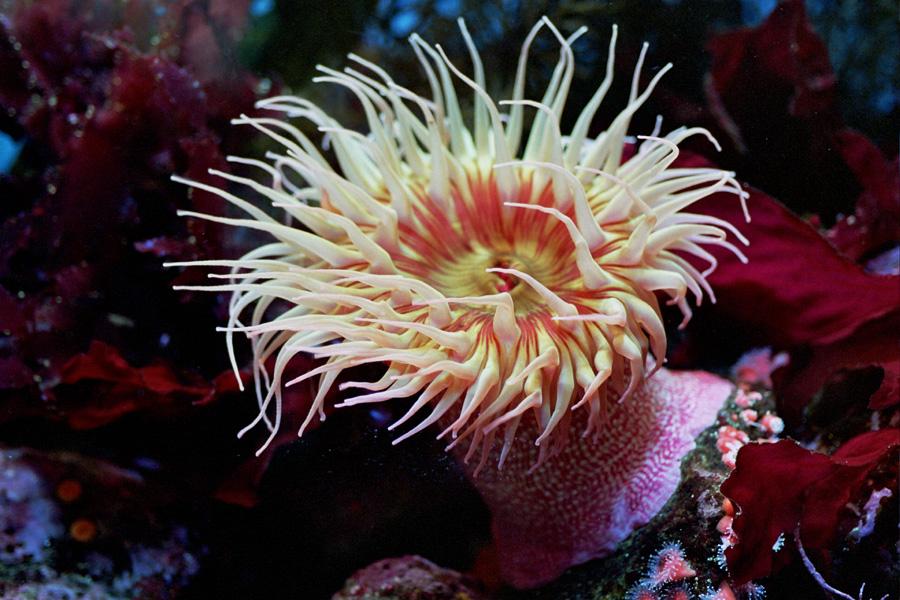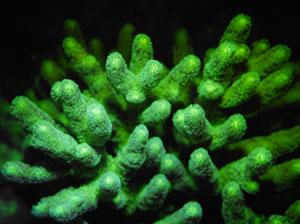When the sun's rays pass through the water and reflect off the reef, they harm the corals, their photosynthetic symbiotic algae, and other inhabitants of the reef. So what prevents these creatures from being fried by the intensity of the radiation?
Adaptation of an article from Science and other sources

Life on a coral reef is quite similar to life on a sunbed. When the sun's rays pass through the water and reflect off the reef, they harm the corals, their photosynthetic symbiotic algae, and other inhabitants of the reef. So what prevents these creatures from being fried by the intensity of the radiation? New research suggests that corals act as sunscreens, absorbing UV radiation and limiting the damage caused to the reef's inhabitants.
Previous studies found that the coral's exoskeleton, made of calcium carbonate, causes the reef to fluoresce under ultraviolet light, and hence it was suggested that the skeleton absorbs UV rays. Calcium carbonate, or calcium carbonate, is a mineral created in nature by animals in a process called biomineralization. The most common use of calcium carbonate is in the mollusk system in the structure called the shell. Corals build their exoskeleton from the material. Its chemical formula is CaCO3.
To test whether calcium carbonate protects organisms living in the reef, marine biologist Ruth Reiff of the University of Queensland in Australia and colleagues studied the sea anemone. The sea lily is a "relative" to corals and shares common tissues with them. Also, the sea anemones are home to photosynthetic symbiotic algae. The sea lily is a marine creature that belongs to the class of corals that has a tube system. The supernumerary system includes inferior animals, whose bodies lack an internal or external skeleton. The body of Shoshant - Sea is in the form of a polyp similar to a thick-walled tube. The tube has one opening on its upper side and around it many hunting arms that compare to the sea lily in the shape of a flower. On the upper side of the sea lily is the mouth opening, through which it receives its food. Around the opening of the mouth are many hunting arms equipped with numerous stinging cells.

The group of researchers placed the sea anemones on coral skeletons or on a white surface wrapped in white adhesive strips in the laboratory. Unlike the sticky strips, the skeletons absorbed almost all of the harmful UV radiation, emitting it as a yellow fluorescent light. Moreover, sea anemones placed on top of the coral received 4 times less radiation and showed 7 times less damage to their DNA than those placed on the sticky strips. The group of researchers also obtained similar results when they ground the skeletons into a fine powder, thus proving that the protection comes from the chemistry of the coral's exoskeleton and not from the scattering of UV rays from their complex, rough surface.
Many of the photosynthetic creatures that live in the sea also produce calcium carbonate and may have begun to do so to protect themselves from ultraviolet radiation, Rief says. "Calcification began about 600 million years ago, when UV levels were much higher than today." Furthermore, during the Cambrian explosion that occurred approximately 530 million years ago, the abundance and diversity of skeletons increased, which may reflect "a need to build corals that arose during the period when many creatures moved towards shallow, oxygen-rich waters where UV levels were high," she adds. . "This new feature is therefore an unexpected addition and adaptation to the host's symbiotic way of life," says expert Denis Allmand, scientific director of the scientific center in Monaco, the Oceanographic Institute.
Scorpions, spiders and other creatures also emit fluorescent light when exposed to UV light, Riff and her colleagues note, and hence suggest that the "sunscreen acceptor" has evolved more than once.
Sources:
Charles Choi's article in Science
Calcium carbonate on Wikipedia
Sea lily in the Spring Encyclopedia
The source of the first image
Article in PlanetEarth

One response
Good and beautiful: members of the Kikuyu tribe (and others) decorate themselves with white clay,
The white color is due to a high concentration of calcium carbonate,
The conclusion The Rem gives a scientific basis for the custom that developed as an ornament,
The white "paste" protects against the strong radiation at the equator.